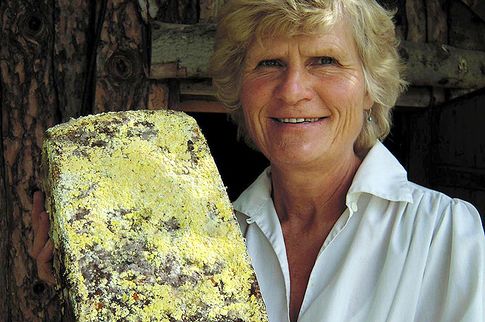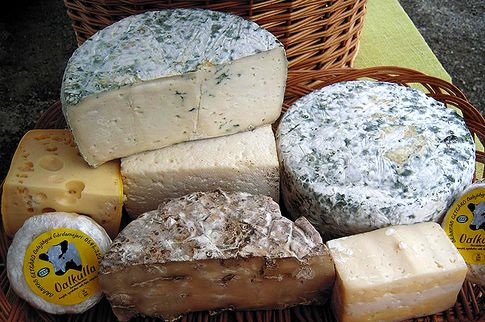Gourmet cheese from Jamtland
Goat cheese from the north Mid Sweden has made French cheese masters swoon over the just right conditions and product...
-
 Will “getost” (goat cheese in Swedish) be as famous as chèvre or caprino? Who knows? Sigrid Kuusiniemi makes cheese in an old earth cellar in Jämtland following her mormor’s recipe. The result made French cheese expert Michel Lepage swoon.
Will “getost” (goat cheese in Swedish) be as famous as chèvre or caprino? Who knows? Sigrid Kuusiniemi makes cheese in an old earth cellar in Jämtland following her mormor’s recipe. The result made French cheese expert Michel Lepage swoon. -
-
Au revoir chèvre, arrivederci caprino! Goat farmers in Jämtland are turning to their roots, and leading the way is Sigrid Kuusiniemi at Stengärde goat farm. Sigrid has developed her grandmother’s cellar-ripened goat cheese, and it has made a French cheese master swoon.
-
 The goat cheeses have fungi in different colors, the most interesting ones are the red ones (see the cheese at the bottom).
The goat cheeses have fungi in different colors, the most interesting ones are the red ones (see the cheese at the bottom). -
-
Using un-pasteurized goat’s milk, Sigrid lets her cheese ripen in an earth cellar that was built in the mid 19th century. The cellar has the exact temperature and humidity needed for the cheese’s surfaces to develop white fungi in different shades, from grayish blacks to autumn leave colored reds.
-
“It takes anywhere between three to six months for the cheese to ripen,” says Sigrid, who began curdle cheese in a pan on the oven some 30 years ago. Today she makes a ton a year and has won three gold medals in Swedish food culture for her “amazingly flowering cheeses full of taste and aroma”.
-
The French artisan cheese expert Michel Lepage has elected Sigrid’s earth cellar the best in Scandinavia. “He got very excited when he saw the red fungus and said it was the best possible. I always thought the red meant something was wrong, since cheeses from other cellars usually had black, white, or grey fungus only,” says Sigrid. But it’s not all about the temperature in that earth cellar, it’s also about the principals on the farm: The 40 goats are rewarded daily with a good portion of organic corn after being milked. What the goats consume, the environment in the dairy, the season and how long the cheese has been left to ripen will all add up to the taste experience. “I make my own culture with milk warm from the goat and ‘filmjölk’ (soured milk). But even if I follow the same directions all the time, not one cheese is like the other,” Sigrid explains.
More about Sigrid’s goat farm:
Stengärde Getgård -
-
